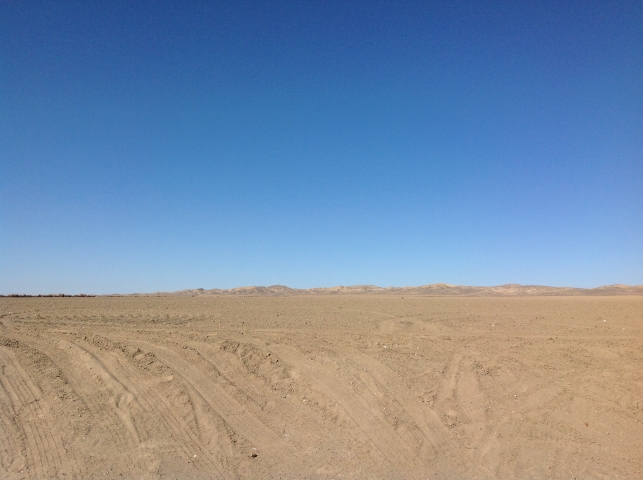Governor Brown, legislative leaders announce $1 billion emergency drought package
Mobilizing state resources to face another year of extreme dry conditions, Governor Edmund G. Brown Jr. joined Senate President pro Tempore Kevin de León, Assembly Speaker Toni Atkins, and Republican Leaders Senator Bob Huff and Assemblymember Kristin Olsen to announce legislation to help local communities cope with the ongoing, devastating drought. The $1 billion package will expedite bond funding to make the state more resilient to the disastrous effects of climate change and help ensure that all Californians have access to local water supplies.
“This unprecedented drought continues with no signs yet of letting up,” said Governor Brown. “The programs funded by the actions announced today will provide direct relief to workers and communities most impacted by these historic dry conditions.”
The legislation includes more than $1 billion for local drought relief and infrastructure projects to make the state’s water infrastructure more resilient to extreme weather events. The package accelerates $128 million in expenditures from the Governor’s budget to provide direct assistance to workers and communities impacted by drought and to implement the Water Action Plan. It also includes $272 million in Proposition 1 Water Bond funding for safe drinking water and water recycling and accelerates $660 million from the Proposition 1e for flood protection in urban and rural areas.
“Taken together, this package provides a major boost to our state’s efforts to manage the drought and strengthen our infrastructure,” said pro Tempore De León. “I want to thank the Governor and the Speaker for working together to respond to this crisis. It shows how we—as leaders–can get things done when we all work together in common purpose.”
“The drought isn’t letting up, so we can’t let up either,” said Speaker Atkins. “This legislation will deliver relief to Californians harmed by the drought and help us manage the significant problems the drought continues to cause. Since our skies are still clear—our job is too. And making sure we meet emergency needs, prepare for short term problems, and advance longer-term projects are an important part of that effort.”
“I want to thank the Governor, the pro Tem and the Speaker for inviting us today. We were briefed on this proposal just this morning, and so far it sounds like a good approach. We need to review the legislation in detail but it seems like a reasonable start,” said Senate Republican Leader Bob Huff. “Republicans have consistently said that storage is essential for providing a reliable water source to all of California for future generations. The Prop 1 water bond that was passed last year is a critical step forward in meeting the needs for California’s future. There’s no question California’s drought crisis has worsened, as once again we’ve experienced a dry winter. With the hot summer months approaching, it’s incumbent on all Californians to be responsible with how they use water. It’s critical that we act now.”
“This emergency drought relief is an important band aid,” said Assembly Republican Leader Kristin Olsen. “We must move beyond temporary fixes. Projects to increase water supply have been hung up in government red tape for decades. I’m glad today we are making decisions that help people and look to us all to take real actions on long-term projects so emergency actions are no longer needed.”
The Sierra Nevada snowpack, which Californians rely on heavily during the dry summer months for their water needs, is at a near record low. The March snowpack measurement came in at 0.9 inches of water content in the snow, just 5 percent of the March 3rd historical average for the measurement site. The overall water content for the Northern Sierra snowpack came in at 4.4 inches, just 16 percent of average for the date. Central and southern Sierra readings were 5.5 inches (20 percent of average) and 5 inches (22 percent) respectively. Only in 1991 has the water content of the snow been lower.
Taking action to further strengthen water conservation in the state, the State Water Resources Control Board on Tuesday voted to expand and extend an emergency regulation to prohibit certain water use, such as washing down sidewalks, and create a minimum standard for outdoor irrigation restrictions by urban water suppliers.
Since last February, the state has pledged over $870 million to support drought relief, including money for food to workers directly impacted by the drought, funding to secure emergency drinking water supplies for drought impacted communities and bond funds for projects that will help local communities save water and make their water systems more resilient to drought. Last month, Governor Brown met with U.S. Secretary of the Interior Sally Jewell in Sacramento to announce nearly $20 million in federal drought relief for California’s Central Valley Project.
In December 2013, the Governor formed a Drought Task Force to closely manage precious water supplies, to expand water conservation wherever possible and to quickly respond to emerging drought impacts throughout the state. The following month, the administration finalized a comprehensive Water Action Plan that charts the course for California to become more resilient in the face of droughts and floods and the Governor declared a drought state of emergency. In April 2014, the Governor called on the state to redouble their efforts at combating drought.
Last fall, the Governor signed legislation requiring local, sustainable groundwater management as well as legislation to put a water bond before voters, which won bipartisan approval in the Legislature and was approved overwhelmingly at the polls. He also issued an Executive Order streamlining efforts to provide water to families in dire need as the extreme drought continues to grip the state by making funding available through the California Disaster Assistance Act to provide water for drinking and sanitation to households currently without running water.
Governor Brown has called on all Californians to reduce their water use by 20 percent and prevent water waste. Visit SaveOurWater.com to find out how everyone can do their part and Drought.CA.Gov to learn more about how California is dealing with the effects of the drought.






















